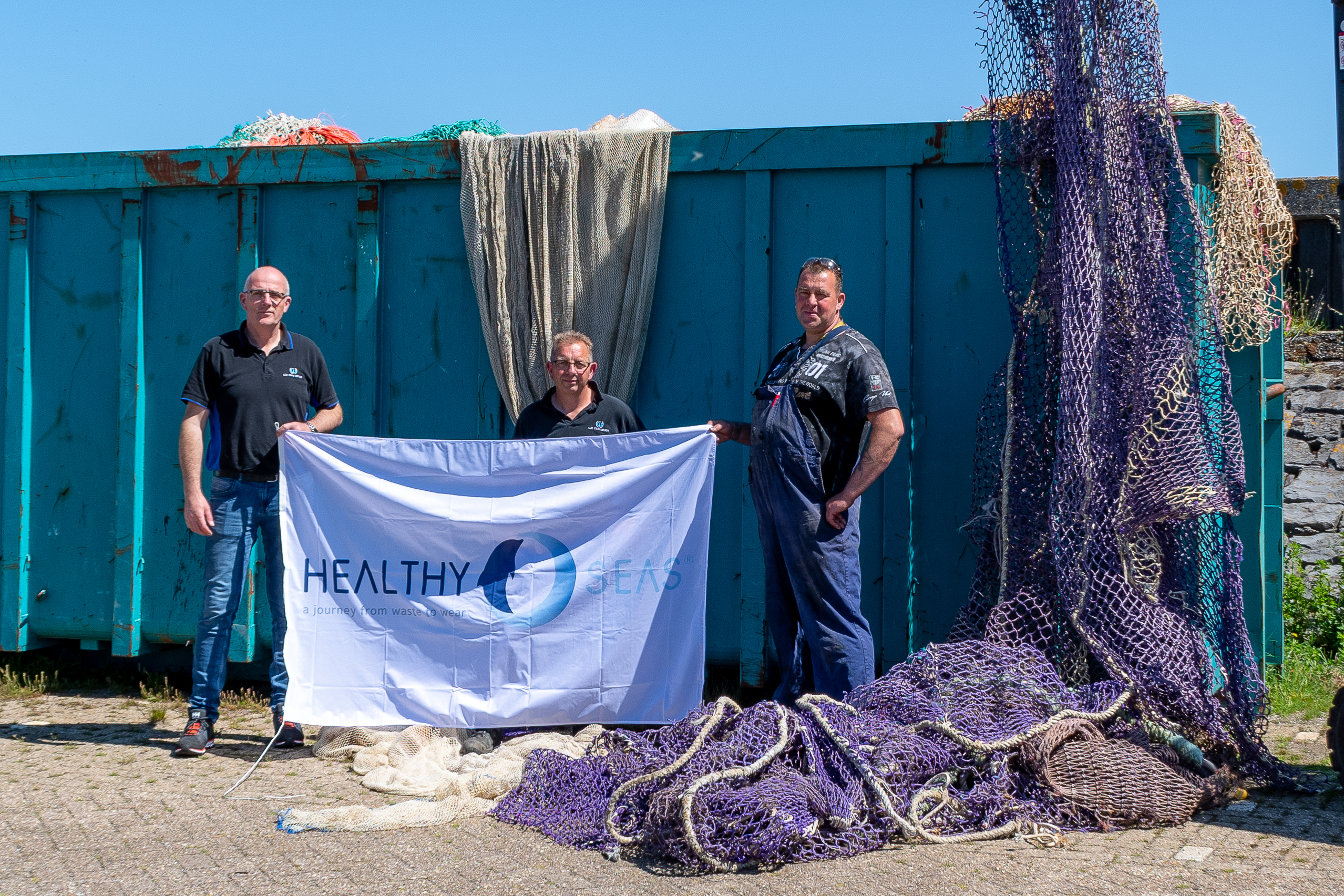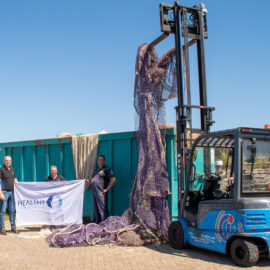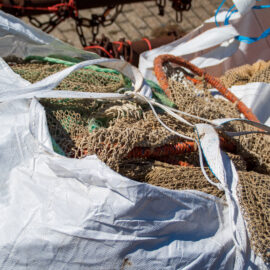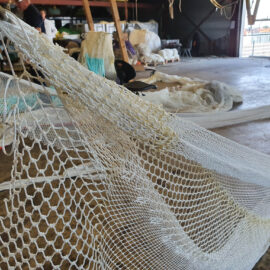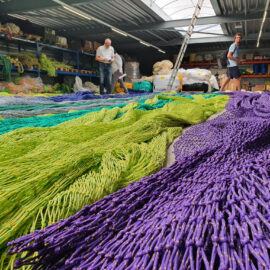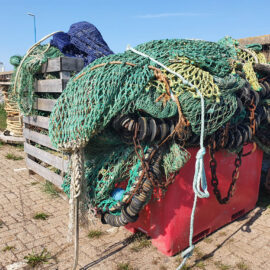CIV Den Oever was the first fishing community to work with us back in 2013 when we started our journey from waste to wear and on average they collect 30 tons of nets per year for Healthy Seas. Through the years, our cooperation has inspired many more to join us so we were overjoyed when Sander van Rijswijk, the manager of the Dutch fishing cooperative, took part in our Q&A.
Q: What is C.I.V Den Oever and how do you cooperate with Healthy Seas?
Sander: CIV Den Oever is a cooperative owned by fishermen/ shipowners. Our goal is to supply our members as best we can. A cooperative doesn’t have a profit motive. We cooperate with Healthy Seas on the coordination, collection and disposal of the waste netting landed by fishermen, recycling companies but designers too.
Q: Who are you getting the waste nets from and who are the people behind the scenes, making the process possible?
Sander: Most waste netting is landed by commercial fishermen. Partly we donate our waste netting from our netloft1. Our skilled team of employees, netmakers, riggers, forklift drivers are daily taking care of the processing.
Q: What are the types of nets most commonly used by fishermen in the North Sea? Which are deadliest and how are they different?
Sander: Fishermen of our fleet, fish mainly for brown shrimps and prawns. For brown shrimps they use small mesh nylon nets and for prawns bigger mesh size PE nets. For me the gill nets made out of nylon are the deadliest. Luckily we see the selling of this kind of nets dropping year by year.
Q: What are the reasons fishing nets are destroyed and are lost or must be abandoned in the North Sea?
Sander: Nets can be destroyed by all kinds of causes. The North Sea is dynamic. Hitting wrecks, stones, filling up nets with gravel or seaweed, jellyfish can cause damage to the nets. Sometimes parts of the net stays behind at the seabed.
Q: Has C.I.V Den Oever recently made any innovations in designing and manufacturing fishing gear that are traceable/recyclable/unharmful if lost at sea, in line with the Extended Producer Responsibility scheme2? If yes, please describe. If no, what are the challenges?
Sander: We always try to make a nets as good as possible. Also a fisherman doesn’t have any benefit of losing his net at sea. That costs time and money. There is not much innovation going on at the moment. Tracebility is hard, when loosing a part of a net instead of a whole net. Recycling is at the moment only possible for nylon as far as I know. To make nets unharmful is not possible. We can try to make that goal but we will never reach 100%.
Q: What were nets made of in the past? Are nylon nets popular with fishermen or do they choose other types of plastic nets? For what reason?
Sander: In the early days nets were made out of natural fibers, afterwards nylon and nowadays more and more PE.
Fishermen started using PE netting more and more when material specifications were getting better and better. PE netting is also cheaper and in some fishing technics its saving fuel also.
Q: Ιs organic fish farming gaining territory in the Netherlands?
If yes, how is this effecting the fishing net production as far as the environmental measures that need to be accounted for?
Sander: In the North Sea, the circumstances are not ideal for organic fish farming. The North Sea its quite a narrow sea. There a lot of activities, also is it host to some of the biggest harbors of the world (Rotterdam, Antwerp, Hamburg) which means that there is a lot of traffic. Fishfarming needs a lot of space so it can become a threat to maritime traffic. Furthermore, we have windmill parks and oil rigs. In the neighbourhood of these parks, fish farming is not allowed.
The North Sea has strong currents and does not have many sheltered places. like in Norway for example. With often high waves, it’s harder to go to the fish farm installations and work there. Because the North Sea is not so deep in most parts, it’s less interesting for fish farming, that requires deeper wate.
- The netloft is the part in the building where used nets are repaired and new nets are made for commercial fishing and also for other purposes.
- Extended Producer Responsibility is a concept where manufacturers and importers of products (in this case fishing gear) should bear a significant degree of responsibility for the environmental impacts of their products throughout their life-cycle



